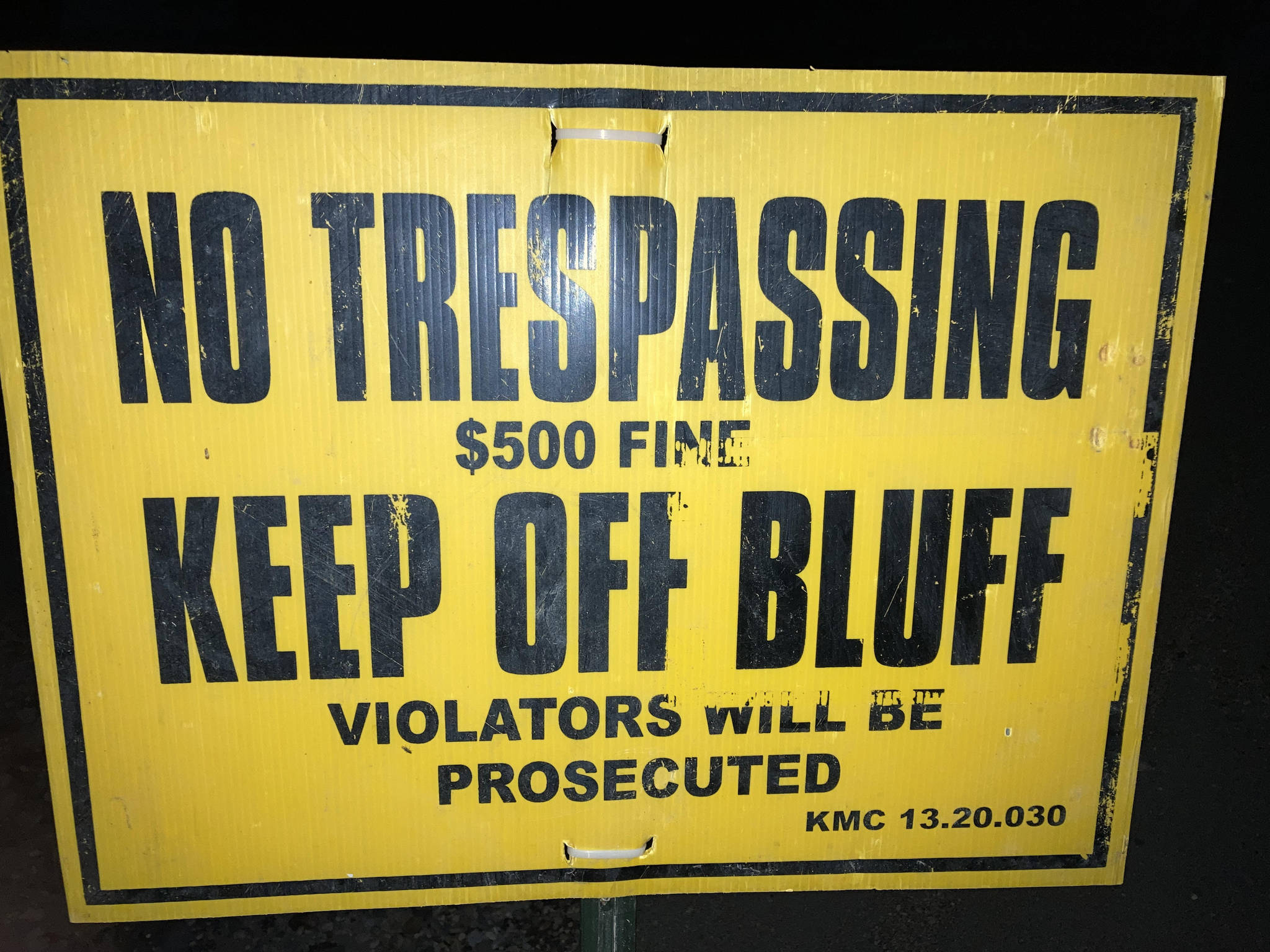The City of Kenai is eyeing the $1 trillion infrastructure bill currently making its way through Congress as a potential source of funding for the Kenai Bluffs Stabilization Project. That project, which has been in the works for decades, aims to stabilize about 5,000 feet of bluff on the north shore of the Kenai River, starting from the mouth of the river and ending near Pacific Star Seafoods.
The bluff is currently eroding at a rate of about 3 feet per year.
“Things are starting to become a little real on the bluff project,” Kenai City Manager Paul Ostrander told the Kenai City Council during the council’s Aug. 4 meeting.
Ostrander said Wednesday that because the legislation working its way through Congress outlines funds to be spent over five years, the overall project timeline remains uncertain. However, the city intends to request those federal funds for the project as soon as possible; once funds are approved, construction could begin as soon as the following year.
“If you would have asked me six months ago if we would have been in a position to receive the entire up to $27 million by September of this year, I wouldn’t have believed it,” Ostrander told the council during their meeting earlier this month. “But now it does appear that there’s a real possibility that could happen.”
In an Army Corps of Engineers feasibility study dated March 2019, the Corps recommended the construction of a protective berm at the toe of the bluff, which Ostrander said Thursday is still the option the city plans to move forward with. The berm is intended to prevent water from flood tides from washing away material that collects at the bottom of the bluff between the bluff face and the berm and to protect the lower portion of the bluff from storm damage. It would also work against erosion caused by high winds and the discharge of groundwater.
As the bluff continues to erode, soil that moves to the bottom of the bluff will accumulate between the bluff face and the berm, which will develop a more stable bluff slope. That stability will encourage vegetation growth, which will allow for further stabilization.
The berm, which would be roughly 5,000 feet long, would be composed of 42,400 cubic yards of armor rock, 33,200 cubic yards of B-rock and 13,100 cubic yards of gravel base.
The Kenai City Council voted earlier this year to award an agreement to HDR Engineering for project design, citing the company’s experience executing Army Corps of Engineer projects. That agreement approved nearly $800,000 for design costs, which included contingency funds in case the work costs more than expected.
Ostrander said during the Kenai City Council’s Aug. 4 meeting that, since being awarded the contract, HDR has worked to review existing project data and determine what information is still needed, with field work — including geotechnical and hydrologic surveying — likely to begin later this month.
The Corps estimates the total cost of project design and construction will be about $42 million, though Ostrander said Thursday he thinks the final amount will be much lower. The cost of the project will also be split: The federal government will cover 65% of costs, while the city will be responsible for a 35% local match.
If the project costs the full $42 million, the City of Kenai would need to come up with about $14.7 million while the federal government would foot about $27.4 million. It’s that federal contribution Ostrander said could be covered by the Infrastructure Investment and Jobs Act, according to the Corps.
In their study, the Corps reported that constructing the berm would provide average annual benefits of around $824,000 and average annual costs of $1,620,000, meaning the average net impact on the city would be a loss of around $796,000 annually. The cost of doing nothing, however, would be higher.
If the berm is allowed to continue to erode, the City of Kenai would incur $39,000 annually in land damages, $359,000 annually in structure and non-structural improvement damages and $66,000 annually in public infrastructure damages. That would be in addition to an average annual loss of $624,000 in recreation value calculated using a unit day value of $7.09 and an estimation of 88,000 annual visits.
Thirty-one properties situated at the top of the bluff and containing 34 structures and 23 non-structural improvements would also eventually need to be condemned if no action is taken, the Corps said in the study.
The legislation approved by the Senate on Tuesday, which includes almost $550 billion in new spending over the next five years, has been touted by U.S. Sen. Lisa Murkowski as a “historic investment.” Murkowski helped spearhead efforts to advance the bill as part of a group of 10 bipartisan lawmakers. The bill is now before the U.S. House of Representatives for consideration.
Among other things, the legislation outlines funding for roads, bridges, broadband expansion, ferries and “resilience,” for which $47 billion is earmarked for two main categories as reported by The Washington Post: cybersecurity and climate change mitigation — of which coastal erosion is a part.
Ostrander said he toured the site of the bluff project on Wednesday with Kenai Public Works Director Scott Curtin and Corps officials, which reiterated how close the project is to becoming a reality.
“This project is actually going to get done,” he said.
More information on the Kenai Bluffs Bank Stabilization Project can be found on the city’s website at kenai.city.
Reach reporter Ashlyn O’Hara at ashlyn.ohara@peninsulaclarion.com.

